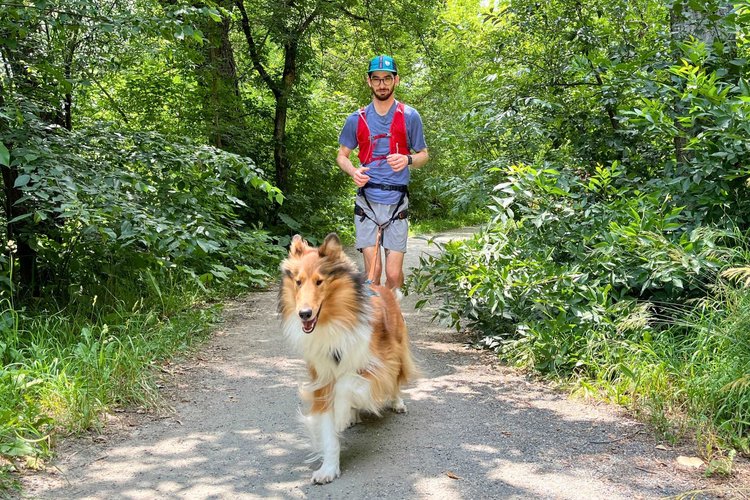
A Complete Guide to Running with Your Dog
Learn how to run with your dog, what gear you'll need, and expert training tips to make it safe and fun for both of you.
Running with your dog can be one of the most rewarding experiences for both you and your furry companion. However, it requires proper preparation, training, and the right gear to ensure safety and enjoyment for everyone involved.
Before You Start
Not all dogs are natural running partners. Consider these factors before beginning a running routine:
- Age: Wait until your dog is at least 12-18 months old
- Breed: Some breeds are better suited for running than others
- Health: Get veterinary clearance before starting
- Fitness Level: Start slowly and build up gradually
Essential Gear for Dog Running
🦮 Hands-Free Leash System
A quality hands-free leash system is crucial for safety and comfort. Look for adjustable waist belts with bungee sections to absorb shock and provide freedom of movement.
🐕 Proper Harness
Choose a well-fitted harness over a collar to avoid neck strain. Front-clip harnesses provide better control for dogs that tend to pull.
💧 Hydration for Both
Bring water for both you and your dog, especially on longer runs or hot days. Collapsible bowls make it easy to offer water breaks during your run.
⚠️ Safety First
- Check paw pads regularly for cuts or irritation
- Avoid running on hot pavement (if it's too hot for your hand, it's too hot for paws)
- Watch for signs of overexertion: excessive panting, drooling, or lagging behind
- Start with short distances and gradually increase
Training Tips
Start with Walking
Begin by perfecting leash walking before transitioning to running. Your dog should be comfortable walking beside you without pulling or getting distracted.
Introduce Running Gradually
Start with short bursts of jogging mixed with walking. Use verbal cues like "let's go" to signal pace changes and "easy" to slow down.
Practice Commands
Essential commands for running include:
- "Heel" or "With me": Stay beside you
- "Stop" or "Whoa": Come to a halt
- "Left" and "Right": Direction changes
- "Wait": Pause at intersections
🏃♂️ Building Your Routine
Start with 10-15 minute runs, 2-3 times per week. Gradually increase duration by 10% each week. Most dogs can comfortably handle 3-5 mile runs once properly conditioned.
Weather Considerations
Dogs are more susceptible to heat than humans. Early morning or evening runs are best during warm weather. In winter, consider booties for paw protection on icy or salted surfaces.
Know When to Take a Break
Your dog's wellbeing comes first. Signs that it's time to slow down or stop include:
- Heavy panting or difficulty breathing
- Excessive drooling
- Lagging behind or reluctance to continue
- Limping or favoring one leg
With proper preparation and gradual conditioning, running with your dog can become a highlight of both your fitness routines. Remember to always prioritize safety and listen to your dog's needs.